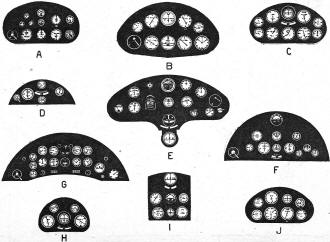|
It is hard to imagine how
pilots managed to find their way through fog, rain, sleet, and snow prior to the
advent of instruments that could indicate whether the airplane was flying straight
and level or spiraling toward the ground. Some flyers were good enough in most situations
to sense attitude even without an outside-the-cockpit visual clue. However, it is
entirely possible to enter into a situation where your senses cannot possibly tell
the difference between normal flight and a life threatening scenario. Albert Einstein's
General
Theory of Relativity tells us that without knowing otherwise, there is no discernable
difference between gravity and physical acceleration. Therefore, a pilot in solid
Instrument Flight Rules (IFR) conditions where he cannot see the sky or ground
could very well mistake the acceleration of a coordinated turn or a climb for the
acceleration of gravity, and then react improperly in a manner that rather than
correct the situation, make it worse. Many a pilot, even in today's world, has succumbed
such a terrible fate.
Scale
Model Instrument Panels for IFR
 Flying by instruments is quite the most
important accomplishment for pilots these days - and for the time to come. No longer
must an airman depend upon his sight and hearing to tell whether he's flying upside
down or whether the motor is coughing and losing revs. Delicate instruments, calibrated
to operate at utmost efficiency, are the mainstay of aviation's future progress.
For they tell us what we want to know both on the ground and in the air. Flying by instruments is quite the most
important accomplishment for pilots these days - and for the time to come. No longer
must an airman depend upon his sight and hearing to tell whether he's flying upside
down or whether the motor is coughing and losing revs. Delicate instruments, calibrated
to operate at utmost efficiency, are the mainstay of aviation's future progress.
For they tell us what we want to know both on the ground and in the air.
Below is an array of common type instrument boards. For the scale modeler, this
should be of great help. He can trace or copy the type panel best suited for his
scale model. Type "A" "B" and "C" are usually found on heavier single engined craft
such as Bellancas, Stinsons, Wacos, Lockheeds, Vultees,' and others.
Simple panels "D" and "H" are found in light planes, Cub, Luscombe, etc. Packed
boards such as "E," "F" and "G" are usually installed in medium or large twin engined
craft, Douglas, Lockheed, Consolidated, Beechcraft, Cessna, to name a few. Panels
"I" and "J" can be found in medium size single engine jobs which have dual controls
and where the board is situated on either side of the pilot's seat. These instrument
board designs are merely a representative group. Other designs do not vary much
in layout.
Posted September 7, 2019
|


